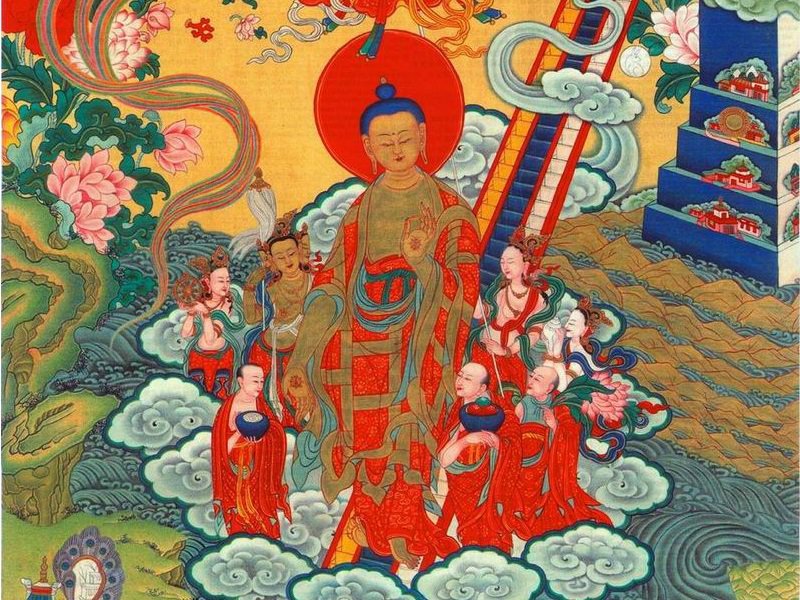“They go to many a refuge, to mountains, forests, parks, trees, and shrines: people threatened with danger. That’s not the secure refuge, that’s not the highest refuge, that’s not the refuge, having gone to which, you gain release from all suffering and stress.
But when, having gone for refuge to the Buddha, Dhamma, and Sangha, you see with right discernment the four Noble Truths — suffering, the cause of suffering,, the transcending of suffering, and the Noble Eightfold Path, the way to the stilling of suffering. That’s the secure refuge, that, the highest refuge, that is the refuge, having gone to which, you gain release from all suffering and pain.
– The Dhammapada, 188-192
Buddha
Buddha is a title meaning “enlightened”, one who has reached a union with their own Being. There are countless people who have reached the spiritual level of Buddha.
The ubiquitous images of Shakyamuni Buddha and other masters inspires us to know our own inner Buddha, through meditation practice, elimination of the ego, freeing the essence, or buddhata, and sacrificing with love for humanity.
Taking refuge in the Buddha for the spiritual aspirant means to put faith into that which is eternal- the Being. It also means to honor those masters who guide us on our path through their own works and efforts in achieving awakening. In the gnostic tradition we are guided by Samael Aun Weor and other masters such as Shakyamuni Buddha, Jesus Christ, Krishna, Moses etc.
Dharma
Dharma means the teaching, the doctrine. Any spiritual discipline has a doctrine, a way the teachings of enlightenment are transmitted across time and space.
A doctrine is necessary in order to not fall into the delusion that we are already enlightened or that we can become enlightened without effort. The work of others who have walked the path before us is contained within the doctrine, and often it has many levels of teachings, some hidden or obscured.
Any doctrine may be in danger of falling into dogma, but a teaching or a doctrine should be constantly renewed with practice and be a living dharma. Samael Aun Weor teaches about the difference between the doctrine of the eye: the dead letter of a teaching, and the doctrine of the heart: the spirit of the teaching kept alive through practice and love.
Sangha
The spiritual community. This can be the local school or center where we practice together, the greater community or organization, and also the vast array of spiritual aspirants throughout time and space that are all working together for the liberation of suffering of all beings.
The community keeps us accountable, it gives us opportunities to help and to be helped, often in ways we may not desire- such as interacting with people we find challenging. The sangha provides a wonderful container for the alchemical process of transformation and awakening when we are working on ourselves with honesty and taking responsibility for our actions.
Let us take refuge in these three jewels.

